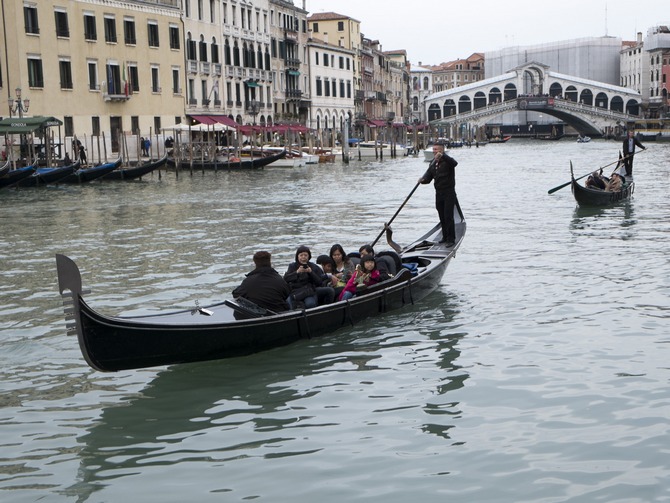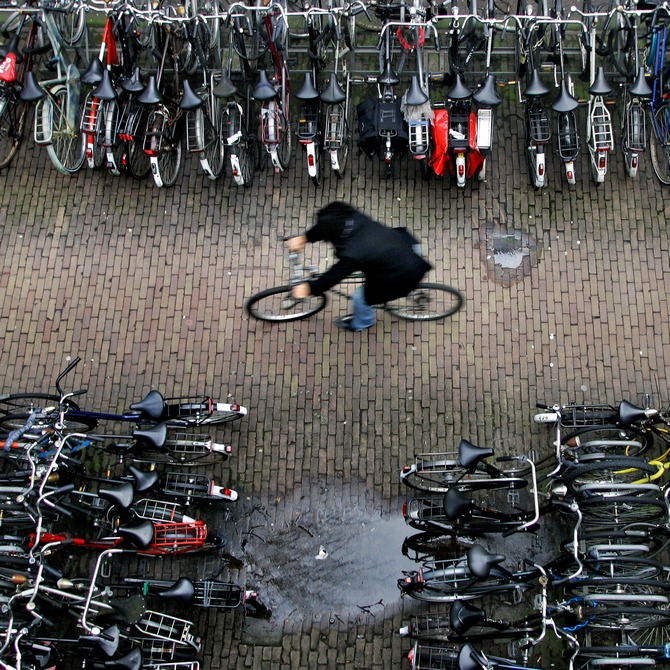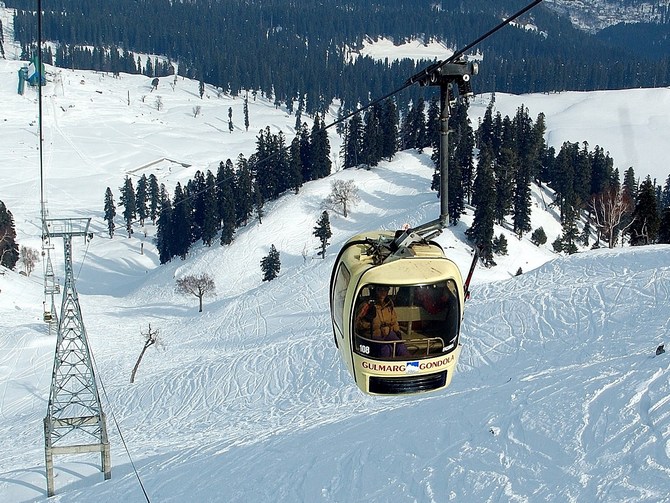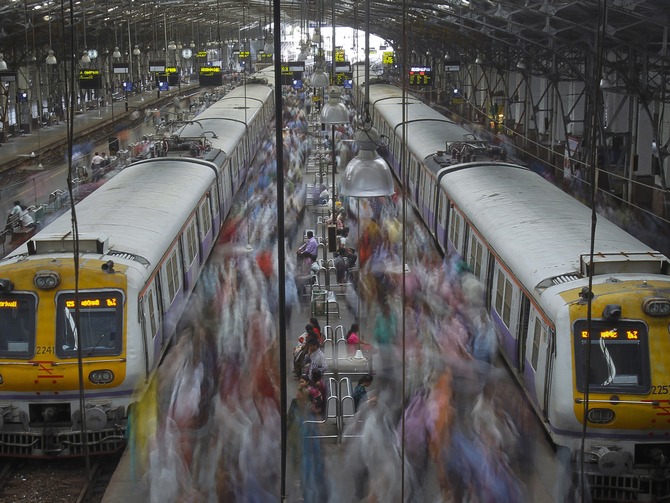 | « Back to article | Print this article |
Bamboo trains, jugaads, traghetti: How the world travels to work!
Besides the fortunate few who zip around in cars, the rest of us must resort to (occasionally) unique modes of transport.
Workplaces govern our lives. They form the centre of our living and travelling to and from our workplace becomes an important part of our day.
But how do people who don't drive cars and bikes reach work every day?
Here's looking at some of the most interesting modes of everyday transport.
Norry (Cambodia)
Derived from the French word lorry, norry is a popular mode of rail transport in Cambodia.
Do not however mistake this rail transport for a train because it's anything but that.
In essence, norry is pretty much a wooden bed frame set on wheels and running on meter gauge tracks around the cities of Battambang and Poipet.
Like with all modes of transport norries were first run manually, using a punt pole. Today a low-power motorcycle or tractor engine powers this rather unique contraption that runs at about 40 to 50 kph.
Norries that are also known as bamboo trains run on a single line so it isn't uncommon to find another one heading in the opposite direction every once in a while.
The solution for this is rather simple -- the norry with the lesser load (or number of people) must be disassembled, lifted off the track to let the other one pass through.
Ingenious isn't it?
Bamboo trains, jugaads, traghetti: How the world travels to work!
Traghetto (Venice, Italy)
Translated as 'ferry' in Italian, traghetti (plural of traghetto) are basically large gondolas without the frills. Primarily used as public transports to travel across the Grand Canal, a traghetti is rowed by two oarsmen, much like the gondoliers.
Unlike in a gondola though, it is traditional to stand during the course of your journey, though it isn't compulsory since it can be tad tricky.
Bamboo trains, jugaads, traghetti: How the world travels to work!
Snowmobiles (Alaska, USA)
The traditional mode of transport of dog sledding has given way to the snowmobile in Alaska. Even though Alaska is pretty well-connected by rail and road, in terrains beyond these the snowmobile continues to remain the primary mode of transport in winter.
Bamboo trains, jugaads, traghetti: How the world travels to work!
Cycling (Amsterdam, Netherlands)
Amsterdam is a cyclist's dream city. The capital of Netherlands is THE place to live in if you love to ride a cycle. Amsterdam encourages cycling and boasts of enviable bike paths, racks and guarded storage garages that can be rented out for a nominal fee.
According to Wikipedia over 60 per cent trips in the inner city are made on cycles and 38 per cent trips in the greater city area.
Bamboo trains, jugaads, traghetti: How the world travels to work!
Jugaad (rural Uttar Pradesh, Punjab, and Haryana)
A three- or four-wheeler vehicle, the jugaad runs on diesel engines meant to power irrigational water pumps. Reaching top speeds of 50-60 kph, jugaads are a popular and cheap mode of transport in many parts of north India.
Since these vehicles are not registered with the Regional Transport Offices, they do not pay any road tax. Needless to say they also pose serious safety concerns, the most common among them being brake failure.
Nevertheless jugaads are popular because they fill the gap of cheap public transport and are used to ferry everything you can possibly think of!
The jugaad is possibly also the only mode of transport that is used as a common noun in the Hindi language, implying a quick fix solution for a larger problem.
Even though it primarily remains a north Indian vehicle, a variation of the jugaad is also used in parts of south India.
Bamboo trains, jugaads, traghetti: How the world travels to work!
Gulmarg Gondola (Gulmarg, Kashmir)
The Gulmarg Gondola is one of the highest operational cable cars in the world. Besides being a tourist attraction, the ropeway project is pretty much the only mode of transport for the employees of the Gulmarg Gondola Project and tourism and forest departments.
Bamboo trains, jugaads, traghetti: How the world travels to work!
Wuppertal Suspension Railway (Wuppertal, Germany)
The Wuppertal Suspension Railway remains the oldest electric elevated railway with hanging cars in the world.
Designed by Eugen Langen, a German entrepreneur and inventor, the first track of this unique mode of transport was opened in 1901 and continues to remain in use today.
Running at heights between 39 feet and 26 feet between Oberbarmen and Wuppertal-Vohwinkel, the railway covers a distance of 13.3 kilometres in about 30 minutes.
It remains a popular mode of transport and transport over 80,000 passengers every day.
Bamboo trains, jugaads, traghetti: How the world travels to work!
Mumbai locals (Mumbai, India)
The lifeline of the bustling metropolis of Mumbai, the suburban railway system is one of the largest in the world. In spite of a very high frequency -- trains run barely few minutes apart -- the system that carries over 2.64 billion people each year is also one under great pressure.
Much like the Tokyo Metro, the Mumbai suburban railways system runs more than two-and-a-half times its capacity during peak hours with passengers often travelling on rooftops. So much so that the Indian officials have even invented a new term to describe it: Super Dense Crush Load.
With an average speed of 50 kph, the Mumbai locals connect the island city with far flung suburbs and surrounding townships that have flourished primarily because of the rail system.







